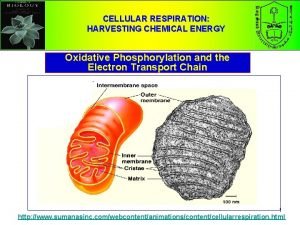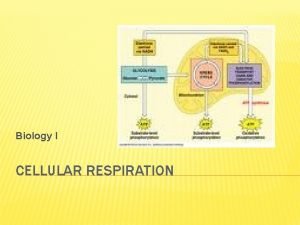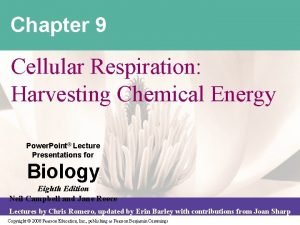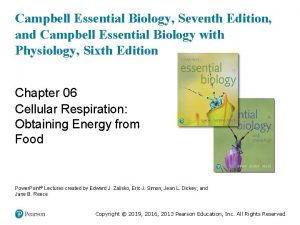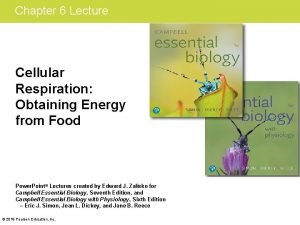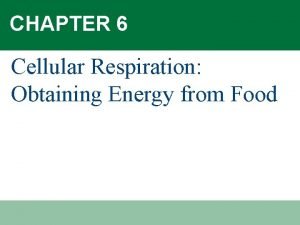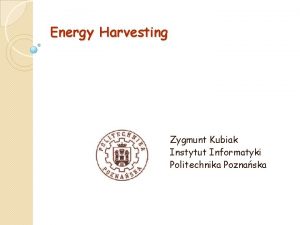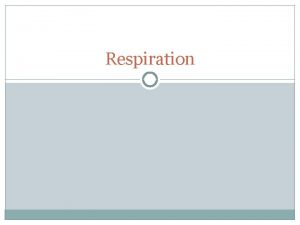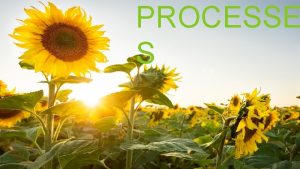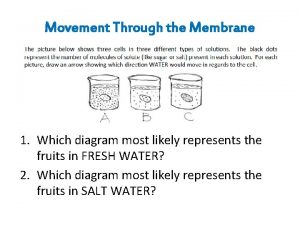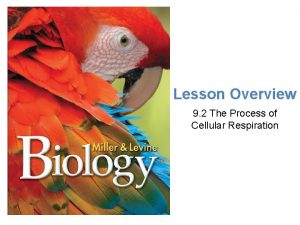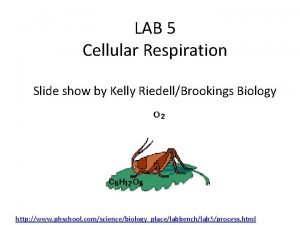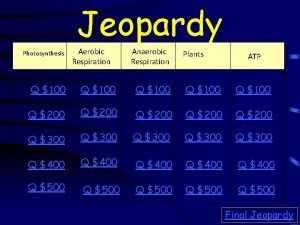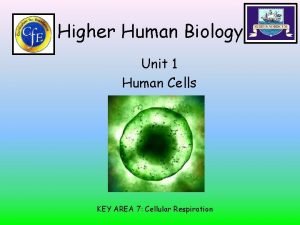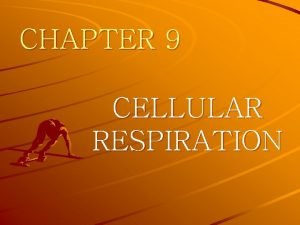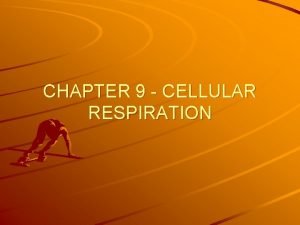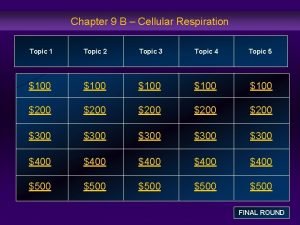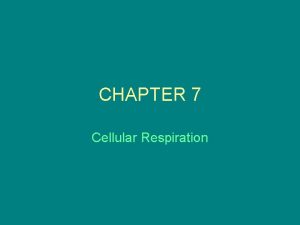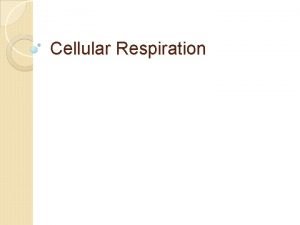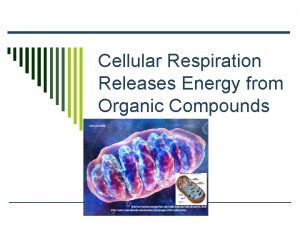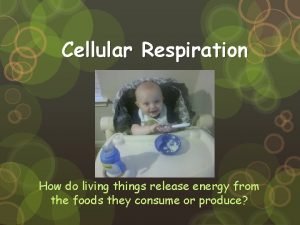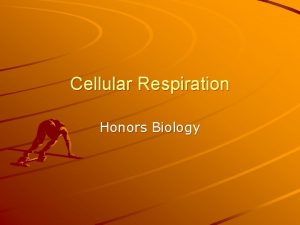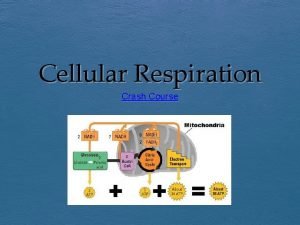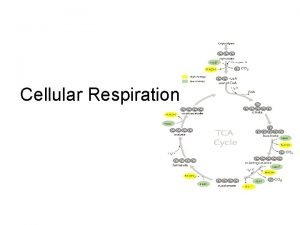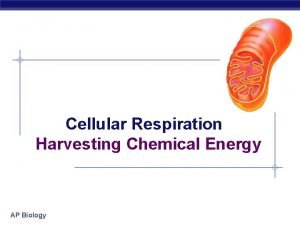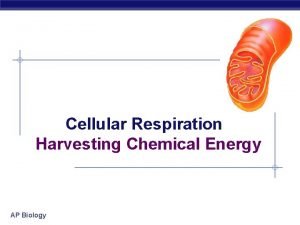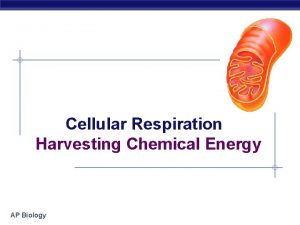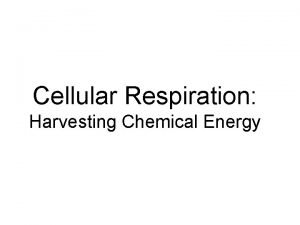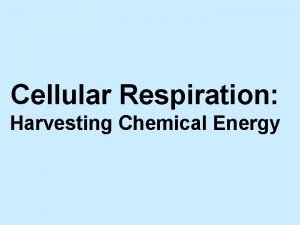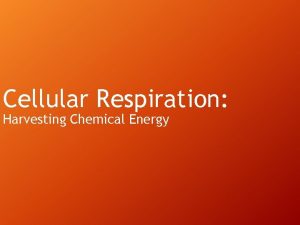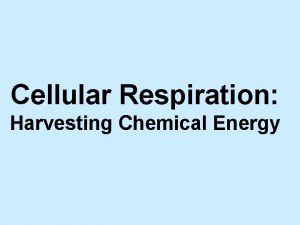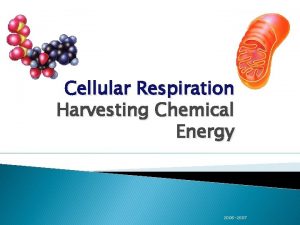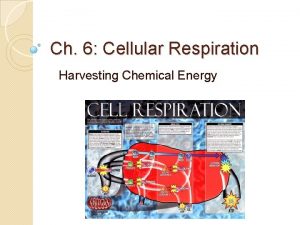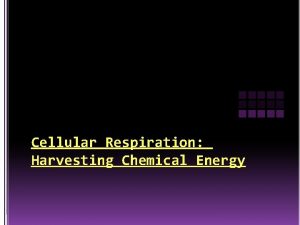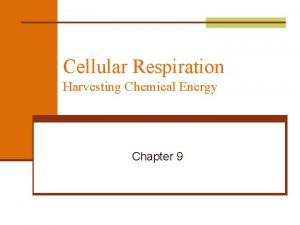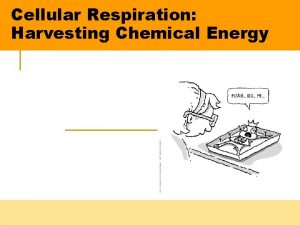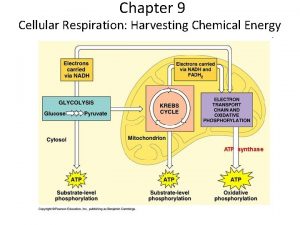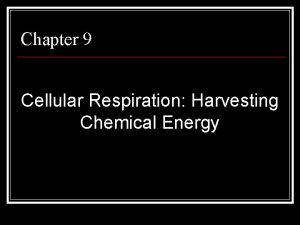Cellular Respiration Cellular Respiration Harvesting Chemical Energy All









































- Slides: 41

Cellular Respiration

Cellular Respiration: Harvesting Chemical Energy • All living things need energy • Energy in the form of… • Food=chemical energy • Cell energy= ATP

C 6 H 12 O 6 + 6 O 2→ 6 H 2 O + 6 CO 2 + Energy • Organic compounds store energy in their arrangement of atoms • Fats, CH 2 O protein can all be used as fuel. Most commonly, cellular respiration is studied using glucose as the source. • There are 2 energy-providing (catabolic) pathways – Cellular Respiration – Fermentation ( partial degradation of sugar without oxygen)


Cells Recycle ATP


Four Stages of Cellular Respiration • • Glycolysis Preparation for Citric Acid Cycle/Kreb’s Cycle Electron Transport

• Respiration uses an electron chain to break the “fall” of electrons to several steps. • Oxidation phosphorylation (adding a phosphate onto a compound in the presence of oxygen) accounts for 90% of the ATP generated by respiration.

Glycolysis Splits a glucose molecule into 2 - 3 Carbon molecules called PYRUVATE products: 2 ATP, NADH and pyruvate



What happens when there is no oxygen to accept the electrons? Only the process of glycolysis is carried out and lactic acid is produced in the muscles. The body cannot tolerate much lactic acid and it must eventually be converted in the liver to pyruvate. results in muscle soreness

Alcoholic Fermentation Some organisms carry out alcoholic fermentation. This was discovered by Louis Pasteur in his study of the chemistry of wines. Yeasts break down the sugars in the juice to pyruvate by glycolysis, then the pyruvate is dismantled to yeild CO 2 and ETHANOL. If the fermentation continues until all the sugar is used, a dry wine is produced. If fermentation is stopped before all the sugar is used, then a sweet wine is produced.

Eukaryote vs Prokaryote Glycolytic pathways

Prokaryotes • Lack mitochondria? ? • Free enzymes break down glucose-ATP • 1 glucose=2 ATP • No O 2 needed so… • ANAEROBIC • Some, however…? ? ?





Quiz-anaerobic gylcolysis • Where in the cell does gylcolysis occur? • Explain “it takes energy to make energy”? ? • How much net ATP is made? • What else is made? • 2 types of fermentation? • Cytoplasm • Invest 2 ATP get 4 • Net= 2 ATP • CO 2 + NADH • Lactate or alcohol

Back to Aerobic Respiration…………. The Fate of PYRUVATE • Taken into mitochondria • Broken down to ACETATE • CO 2 produced • Binds to large protein Coenzyme A to produce acetyl Coenzyme A

Preparation for the Citric Acid Cycle C The pyruvate looses a carbon leaving the 2 carbon molecule C Acetyl Co. A CO 2 products: CO 2, Acetyl Co. A and NADH

The Citric Acid Cycle Products: CO 2 ATP, NADH, FADH

The Citric Acid Cycle (TCA) or KREBS CYCLE • CO 2 • NADH & FADH • 2 more ATP

What is NADH? ? FADH? ? • • ENERGY CARRIER! Same for FADH Carrier to…? … ETC


Quiz-Krebs cycle (TCA cycle) • What are the reactants? • What is produced? • What do we mean by nonmembrane reactions? • What is NADH? FADH? • What is Co. A and why is it important? • Pyruvate (C 3) • 2 ATP, CO 2, NADH, FADH • Enzymes not embedded • Energy carriers • Escort molecule to Krebs cycle

Mitochondria H+ H+ NAD H+ H+ outer membrane H+ matrix H+ H+ inner membrane ( ATP synthetase) The matrix is a protein rich solution which contain the enzymes which run electron transport. ATP SYNTHETASE is the enzyme which is responsible for making ATP.

Mitochondria: Site of Electron Transport Chain The Mitochondria have 2 layers/two membranes • the outer membrane • inner membrane which has many folds. • these folds are called Cristae • The purpose of the cristae is to increase surface area, they hold the ATP synthase (which puts the ATP together • More ATP synthase more ATP The H+ which are brought to mitochondria accumulate between these two membranes.



Electron Transport Chain electrons The electrons are passed back and forth across the membrane where their energy is gradually decreased and used to transport H+ through the membrane. Oxygen is the final electron acceptor and it joins with the H+ to produce H 2 O. If there is no oxygen, the electron chain cannot continue because there is no way to release electrons.

Electron Transport Chain (ETC) • Enzymes embedded in mitochondrial membrane – ATP Synthase embedded in the inner mitochondrial wall. ATP Synthase synthesizes the ATP from the materials processed within the ETC


Products of the Electron Transport Chain 34 ATP + Water

NADH carries electrons to ETC glycolysis prep Krebs ATP Electron Transport chain


ONE GLUCOSE MOLECULE PRODUCES 34 -36 ATP Glycolysis 4 ATP Krebs Cycle 2 ATP ETC 2 are recycled back to allow glycolysis to continue (-2) 2 ATP • Glycolysis • Recycled • Kreb’s Cycle • Electron Transport Chain • 4 ATP -2 ATP 32 -34 ATP 34 -36 ATP



Summary Quiz • What are the reactants of aerobic respiration? ? Products? Equation? • List the three respiratory stages: – Where in the cell do each occur? – What are the products of each? • Why is oxygen needed? • How much ATP is produced by – Anaerobic gylcolysis? – Aerobic glycolysis? • List the 2 types of fermentation? ?
 Cellular respiration harvesting chemical energy
Cellular respiration harvesting chemical energy Chapter 9 cellular respiration harvesting chemical energy
Chapter 9 cellular respiration harvesting chemical energy Chapter 9: cellular respiration: harvesting chemical energy
Chapter 9: cellular respiration: harvesting chemical energy Cellular respiration harvesting chemical energy
Cellular respiration harvesting chemical energy Cellular respiration chemical equation
Cellular respiration chemical equation What is the equation for cellular respiration in words
What is the equation for cellular respiration in words Chemical formula for cellular respiration
Chemical formula for cellular respiration Energy flow in cellular respiration
Energy flow in cellular respiration Consumer
Consumer Cellular respiration obtaining energy from food
Cellular respiration obtaining energy from food Cellular respiration obtaining energy from food
Cellular respiration obtaining energy from food Energy harvesting przykłady
Energy harvesting przykłady Cellular energy section 1 how organisms obtain energy
Cellular energy section 1 how organisms obtain energy Redox reaction in cellular respiration
Redox reaction in cellular respiration What is the correct equation for cellular respiration?
What is the correct equation for cellular respiration? Chemiosmosis steps
Chemiosmosis steps Cellular respiration product
Cellular respiration product Fermentiert
Fermentiert Why is cellular respiration important
Why is cellular respiration important Complimentary processes
Complimentary processes Cellular respiration reactants
Cellular respiration reactants Formula photosynthesis
Formula photosynthesis Photosynthesis recipe card
Photosynthesis recipe card What happens during glycolysis
What happens during glycolysis Overview of cellular respiration
Overview of cellular respiration Overview of cellular respiration
Overview of cellular respiration Overview of cellular respiration
Overview of cellular respiration Overview of cellular respiration
Overview of cellular respiration Lab bench cellular respiration
Lab bench cellular respiration What is the word equation for cellular respiration
What is the word equation for cellular respiration Higher human biology cellular respiration
Higher human biology cellular respiration Function of cellular respiration
Function of cellular respiration Cellular respiration releases
Cellular respiration releases Starting materials for cellular respiration
Starting materials for cellular respiration Chapter 8 section 3: cellular respiration
Chapter 8 section 3: cellular respiration Redox reaction in cellular respiration
Redox reaction in cellular respiration Where in the cell does cellular respiration occur
Where in the cell does cellular respiration occur Role of cellular respiration
Role of cellular respiration Cellular respiration releases
Cellular respiration releases Cellular respiration redox
Cellular respiration redox Respiration crash course
Respiration crash course Cellular respiration
Cellular respiration



